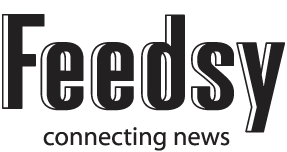The Reserve Bank is keeping its options open going into the new year as the gloomy global outlook, confusing spending behavior and the threat of a wage-price spiral continue to complicate its soft landing for the economy.
At its last meeting in December, the central bank board considered a pause, a 25 basis point hike and a larger 50 basis point lift as possible options.
The central bank ultimately landed on the 0.25 percentage point lift to the official cash rate in December in its bid to chase down inflation that was still “too high”.
In the minutes from the December meeting, board members again pointed to the lagging effect of rate hikes on economic activity.
Despite the delayed impact of rate hikes, board members said it was still too early to hit the brakes given it would take “several years” to return inflation to the target range and there was no new evidence to the contrary.
The board also said no other central bank had stopped hiking yet.
But as observed by JP Morgan chief economist Ben Jarman, the December meeting marked the first active consideration of a pause.
“Previous decisions have been between 25bp and 50bp only, so officially considering a pause is a significant step, but one moderated by keeping 50bp on the table,” he explained.
In support of a 50bp hike, board members said the possibility of strong wages growth triggered by the enduringly tight labour market was a key point of concern.
“Australia was not yet in such a situation, but the inflation mindset was shifting, with firms more willing to put up prices than a year earlier and upside risks to wages growth potentially building.”
The board members were also mindful of “acting consistently” to maintain confidence in the central bank’s handling of inflationary pressures.
For policy setting into the new year, the board did not rule out any options, but Mr Jarman thinks the RBA is close to a pause.
“The share of household income being spent on required mortgage payments would reach all-time highs in late 2023, given the reset profile and market pricing, which clearly imposes significant further drag from here,” he said.
Meanwhile, consumer sentiment as measured by ANZ and Roy Morgan’s weekly survey fell 0.4 points.
The 82.5 reading is well below the monthly average of 111.7 but over the past four weeks the gauge has hovered within the low-80s range.
The manufacturing sector’s post-pandemic tailwind has also come to an abrupt end as rising interest rates, high energy costs, acute labour shortages and lingering supply chain issues finally catch up with manufacturers.
After a strong September quarter, the Westpac-Australian Chamber of Commerce and Industry gauge of industrial business conditions has dropped sharply into negative territory.
The “actual composite index” fell from an elevated 64.6 in the September quarter to 49 in the December quarter.
A reading below 50 indicates declining conditions.
Poppy Johnston
(Australian Associated Press)





